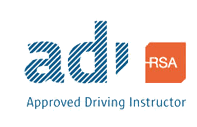Learner Permit Holder
Learner Permit Holder
Safety for Permit Holders
To ensure your safety and that of other road users, learner drivers are bound by certain laws.
Driving alone:
You can’t be alone in the vehicle when driving, regardless of how long you have been driving and how many learner permits you have held. And the person who’s with you must hold a full driving licence for the category of vehicle you are driving for a continuous period of 2 years.
The only exceptions to this are when you are:
- Driving a work vehicle (eg, agricultural tractor or JCB), unless it has been adapted to carry a passenger, and the passenger holds a full driving licence for a work vehicle for a continuous period of 2 years.
- Riding a motorcycle, if you obtained your first learner permit on or after the 6 December 2010 you need to carry a Certification of Satisfactory Completion with your permit in order to drive .
Accompanying other learners:
You may not act as an accompanying driver, ie, holder of a full licence, for a person driving on a learner permit.The Certificate of Competency you receive on passing your driving test does not qualify – you must hold a full licence to be an accompanying driver for a continuous period of at least 2 years.
‘L’ plates:
Your vehicle must display an ‘L’ plate front and rear. The plate should consist of a red ‘L’ on a white background.
Motorways:
No driving on motorways even if you possess a certificate of competence.
Trailers:
If you hold a learner permit to drive vehicles of categories B, C1, C, D1 or D you may not drive the vehicle when drawing a trailer.
Passengers:
No passengers can be carried for payment or other reward.
Vehicle safety
Safe driving alone does not ensure road safety. The vehicle you are driving must also be fit to be on the road. In fact, it is a serious offence to drive an unsafe vehicle on a public road.
Laws exist to enforce vehicle standards. One of the most important of these is that your car, if more than four years old, must undergo a regular health-check called a National Car Test (NCT).
As a driver, it is your responsibility to ensure your vehicle is in good working order. You must ensure that the steering, brakes, front and rear lights, reflectors, rear view mirrors, safety belts, speedometer, tyres, windscreen wipers, horn and silencer are all checked regularly to ensure they are in good condition and working properly.
Other requirements
Not all of the following are legal requirements but they are all important to adhere to:
Children in motor vehicles
You must not leave young children on their own in a motor vehicle, even if you are away for a short time. The children may face a number of hazards, such as:
- A fire breaking out
- Dehydration and heatstroke on a warm day (if all windows are closed)
- Being trapped in electric windows, which could result in serious injury or death
Animals in motor vehicles
You should never leave animals alone in vehicles. It is cruel and unsafe and can result in injury to the animal and/or damage to your vehicle.
Using a mobile phone
You must not drive a vehicle or ride a motorbike while using a handheld mobile phone. It is an offence that can result in your receiving up to four penalty points.
Cyclists should never use a mobile phone when cycling; pedestrians should be careful when using one.
iPods etc
Personal radios and MP3 players can be distracting and cause you to lose concentration while driving or crossing the road. Cyclists in particular should avoid these devices, as they, more than most, rely on their hearing while on the road.







